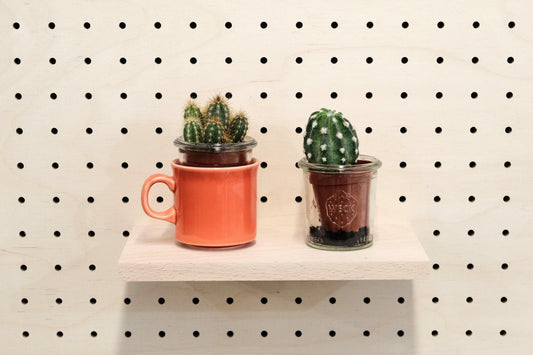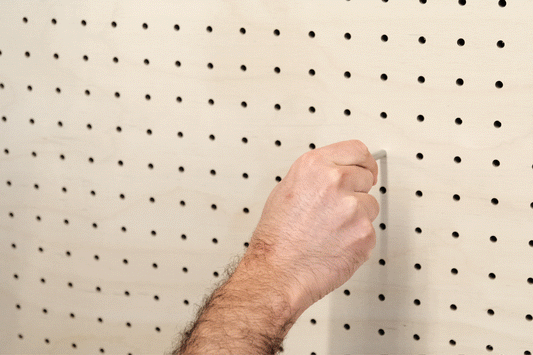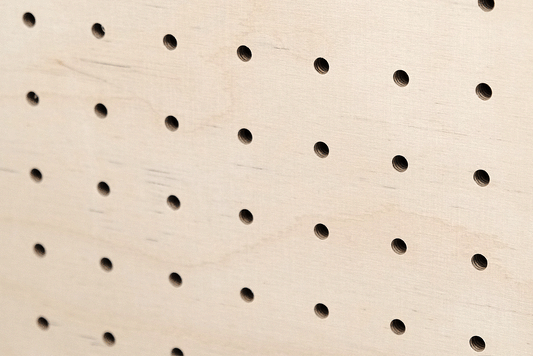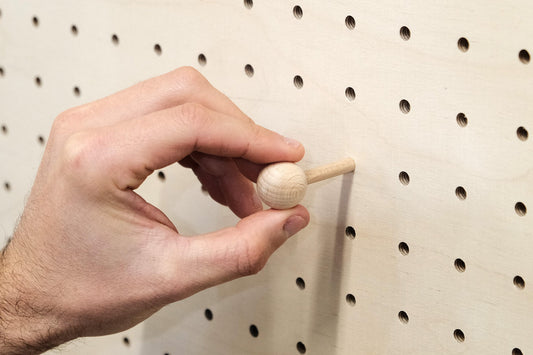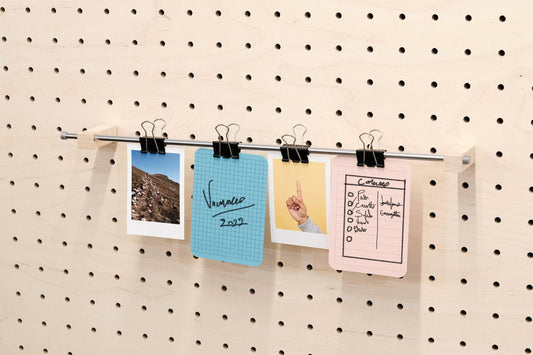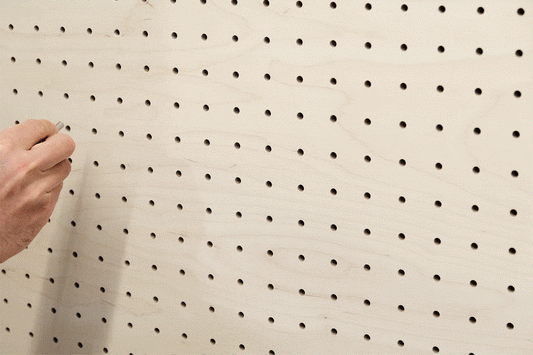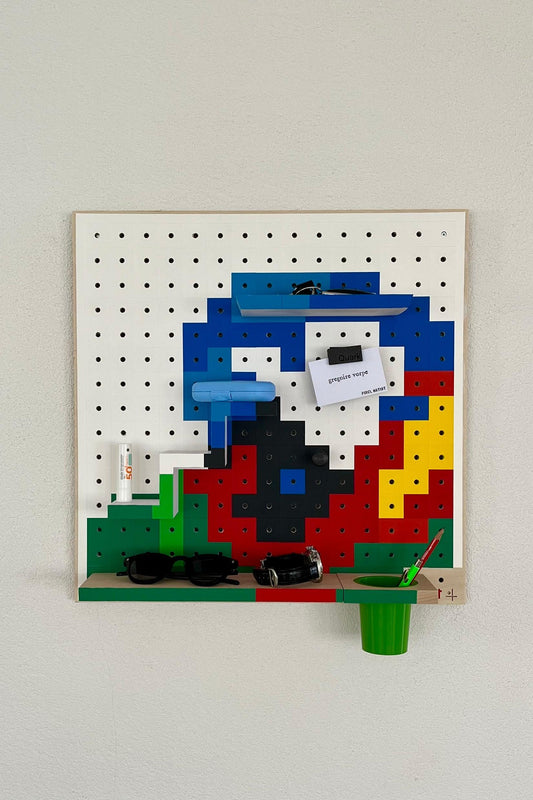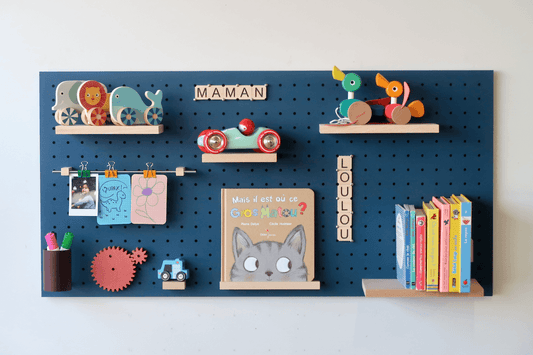He is the official designer of the AMPM brand and Poliform, an international brand, among others. But he is also artistic director, teacher, lecturer and workshop leader.
Meeting with an extraordinary designer who brilliantly combines humility and talent ..... No "me I" at home, but on the contrary, the spirit of a team and a deep awareness of the responsibility to create furniture for people , whether customers or manufacturers, while preserving the environment.
An entire program.

First of all, how did you get into the world of design? Was it a longstanding vocation or did it happen by chance?
Since I was little, I like to draw, paint, make objects. I had an Italian grandfather who was a tailor and who lived surrounded by his creations and designs which fascinated me. So after high school, I joined the Fine Arts where I was able to realize that very quickly, I had a particular interest in artistic creation. It was related to functionality. Design then appeared to me as a discipline that suited me perfectly because it combines art and functionality. I then joined the National School of Decorative Arts in Limoges. What I really liked was this first link with industrial production. For most of the pieces, we made plaster molds to then have a mass production of objects.
Can you tell us more about your roots? Because on your site, we see that you are both present in France, in Bordeaux and in Italy in Milan? So your roots are double?
I grew up in Périgord, which is a terroir region par excellence. I think it is important in our business to be firmly rooted in tradition. When I create an object, I look a lot at the past, at tradition, at objects from certain historical periods and I try to reinterpret their codes. After Fine Arts, when I realized that I wanted to do design, I quickly left for Milan. I understood very early on that if I wanted to do design at a certain level, I had to go to Milan, the design capital of the world. I left there to finish my studies and then I was able to join design agencies. This is where I created my first agency.
I lived there for twenty years and I still divide my time today between Bordeaux and Milan.
As a result, there is a real duality of culture at home between that of Perigord and Italy. This is a big advantage because the Italians are very fond of the "French" artistic approach which brings a certain sensitivity and we, as designers, benefit greatly from the know-how very present in northern Italy, where the fabric industry is very strong.
Precisely, what are the differences between French and Italian design?
There are stark differences. The Italians have design in their DNA, one might say, and have been since 1945. It was at the end of the Second World War that brands like Flos, Artemide, Zanotta began to emerge. Or even Piaggio which, like many Italian brands, comes from the arms industry. Piaggio made airplane wings. These craftsmen and designers knew how to use, redirect and transform technology to produce objects that are still legendary today, such as the Vespa, for example.
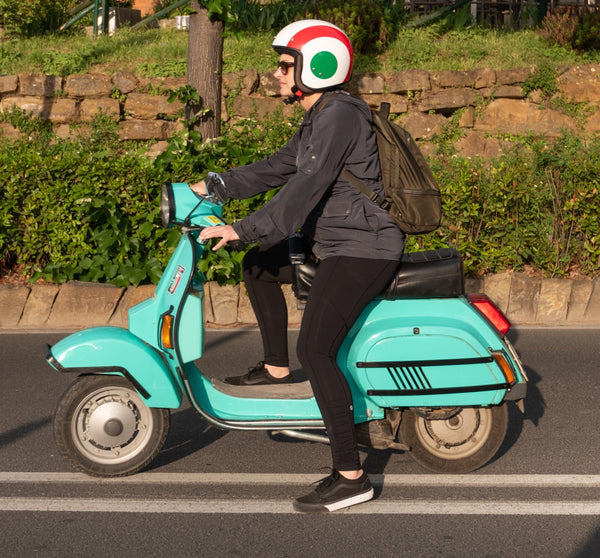
In Italy, they have been able to keep a very present know-how since then when in France, we have lost it especially in furniture. It still persists in Luxury with brands like Vuitton or Hermes, but otherwise our know-how has been greatly lost throughout France. Even if in recent years we have been trying to catch up a bit, we are seeing a boom with small emerging brands or also with personalities like Philippe Starck.
In France, we stayed for a long time with interiors inherited from our parents and grandparents where decoration had no place. This interest is very recent, whereas in Italy it has almost always existed.
But I find that there is still a huge gap between Italy and France. Especially in terms of design and decoration culture. Italians are much more cultured, they know the brands, the designers. In France, we are already talking to an elite when we talk about certain brands or certain designers. This is where the difference lies. Design is part of Italian culture. Italians love beautiful things.
Can you describe your creative process and your way of working when you create a new object?
There are several scenarios, either it's a brief from clients even if I prefer to speak more of partners and even of friends because there are some with whom I have worked for almost ten years. There is a great trust that has been established between us over the years.
It is true that there is on one side the designer and on the other the brand. You have to be able to get along perfectly and when the collaboration dates back more than ten years, the ties are very strong. This means that we understand each other perfectly.
As a designer, I really put myself at the service of the brand, at the service of its identity to try to bring it to a vision of the things we have in common. It's real teamwork. As with AMPM, for example, with whom I have worked for more than ten years. It's true that there is a real climate of trust and we try to push the brand upwards in terms of quality, innovation and design. For this, I fit in perfectly with the vision of the artistic director of the brand. Same in Italy where I work with Poliform. Either they have specific requests, or the trust created with the brand allows me to make them proposals based on intuitions or shortcomings that we may have felt. I also know what I can bring them.
Afterwards on a personal level, I have reflexes, approaches where I will work on fluid shapes, round but not soft for all that. “ I like to smooth things over” as I often say.

What do you think the Deco will be used for?
As I said, in my way of working, there is a certain softness in the forms because I try to bring objects into the habitat that will create a certain well-being. The Italians have this culture of living well more than us. Even if it starts in France. However, a piece of furniture, an object must contribute to well-being and must be able to integrate into all lifestyles.
In design, what will be the most important?
I try to remove the superfluous, to keep the essence of what we want to tell. Work on the details to give meaning to the objects we put on the market. Because there are already a lot of objects on the market, so when we add one, we want it to have a strong reason to exist.
The other direction also for us is to create “timeless” products , which will not appeal to fashion or current trends. These products will have the strength to last over time. Today, we talk a lot about sustainable development. This approach will not only concern materials. Even if of course, we work with recycled and recyclable materials. But we really want to offer users, customers who buy our products, objects which, in ten years, will not be out of fashion. I hope these objects will have such an essentiality and simplicity that fashions won't make them obsolete. This also involves high quality, noble and rich materials that will contribute to durability. Working them with shapes that are not too invasive will make them timeless.
What is your favorite piece of furniture or object to draw?
I have a small predilection for chairs. For designers, they always represent a challenge. It is an exercise to which I willingly lend myself because it is the most difficult. This calls upon many constraints, of ergonomics and functionality. There are also many new technologies and innovative materials available today.

It is an object that I enjoy working with. I am lucky enough to be able to draw anything and everything. There is always something to discover about new typologies. Which always makes me very excited.
For example, even though I specialize in housing, I am increasingly led to work with the development of flex office and new ways of organizing offices. These new lifestyles will therefore require new objects, adapted to these new modularities.
We bring our habitat know-how into the world of the office with objects of different types.
Your Pegboard product fits into this universe and is a perfect example. It is an innovative object, on the border between home and office, which can travel from one universe to another.
People who inspire you?
It's more historical periods that inspire me rather than people per se. The 1930s and 1940s, first of all because they marked a real turning point. It was a pivotal period when very rich decor was swapped for clean, minimalist interiors. While maintaining a certain quality of materials. We can cite Pierre Chareau and Jean Michel Franck . As well as the modern movement of Le Corbusier . What I appreciate is that they knew how to go for something minimalist while keeping the richness of certain materials. I am very attentive to this period from which I draw a lot of inspiration.
The sixties also , whether in Italy, the United States or Scandinavia, were a time of very strong innovation for furniture. I have a particular attention for people like Gio Ponti in Italy, like Hans Wegner for the Scandinavian Countries and the American couple Eames . I'm much less current trends that parasitize me a little too much. I prefer to study and deepen books talking about these periods. I am currently reading Laure Adler's book on Charlotte Perriand. I had the chance to meet her. She's someone I really appreciate and I love the pieces she's been able to create during her career. Jean Prouvé too. We have also started a collection in reference to this universe. Once again with a view to bringing well-being, soft shapes, natural and warm materials.
It is rather in the past that we can draw our inspirations. The idea is not at all to copy but to understand what makes these objects so interesting, so deep, so timeless. It really feeds my inspiration and my creation. Even if I still look at what young designers are doing.
But I do not hide from you that people like Gio Ponti, Jean Prouvé, Charlotte Perriand, I never tire of watching what they did and why they did it!
You combine different caps. You are not only a designate, but also an artistic director, a teacher, a lecturer… What is your favorite mission?
My special moment is in the morning when I do little sketches, when I bring my thoughts and ideas to life. Usually it's the time when I arrive at the office and there is no one there yet. I get lost in my thoughts and it's very relaxing. It's one of my favorite moments!
But when I give conferences, give interviews or lead workshops, I can talk about my passion and I love that, being able to exchange. It is something that gives a lot of satisfaction; the exchange.

Art direction makes it possible to move from “student” mode who only cares about his art to a much more global understanding of all the factors, all the constraints, all the actors in the profession who come into play in the process. creative. We are a kind of orchestra conductor and it is very interesting to work with engineers, people from marketing and communication. It's almost another job but it's also very rewarding. You have to elevate yourself a lot more and see the project globally.
I really think that to be a good designer you have to be able to integrate all these market constraints. The smallest chair will not be just a chair but it will represent a brand. The product will be destined for a certain market, certain countries. A chair will also become the work of the people who work for the company and out of respect for these teams, we have no room for error. The product drawn will contribute to the aura of the brand, sometimes even to its survival. We have a great responsibility vis-à-vis this whole chain.
You received 14 prizes just that! It's a great track record, what does it mean to you? Is it important or completely relative?
Certainly we are happy when we have a price that falls but that's not really what I'm looking for. It's not very important to me. It's more the human relationship that I have with my partners who have become friends over time that will be essential. It gives me much more satisfaction to know that my partners are successful, that a new showroom is opening in China.
What are the current trends?
The trends I can give them to you. On the other hand, we are going the other way around. Our role is precisely not to follow them but to create them. Those we don't follow, for example; caning, extreme curves in the sofas, modular systems in the sofas, terrycloth.
Our role as a designer is really to bring something new. When there is a trend, we try to go against it.

Otherwise, I like the natural braiding that we have been working on for a very long time and I am currently working on very good quality old velvets.
I saw on your site that you held conferences all over the world. Are there different trends emerging depending on whether you are in Brazil or China?
We can say that with the Poliform brand, known worldwide and distributed almost everywhere, we must not be mistaken because we must offer products that will be able to please the greatest number of people in China and Brazil. I must admit that we are witnessing a certain homogenization of styles worldwide. At Polyform, for example, the style is timeless, elegant and not ostentatious. We can see that it is very popular and that it meets a strong demand, particularly from Chinese people who have evolved a lot in terms of tastes over the past ten years and are tending more and more towards this refined contemporary minimalism. They seek simple elegance . These are products that have meaning with a fairly strong cultural level. I find that China is interested in this, it shows that it is changing a lot and very quickly.

Do you have a crush on an object from a famous designer???
More than the objects, I rather look at the brands. Yes, there is a designer Christian Liegre and in this case it was his materials that seduced me. He really manages to bring a subtle dimension by reworking the materials.
Your latest musical favourites?
I enjoyed listening to Daft Punk again recently and I try to convert my children to a more poetic rap than what they are listening to at the moment; like that of MC Solar. Otherwise, classical music soothes me a lot. But when I draw, it's more in silence.
In the kitchen, do you have a favorite dish? And will he be Italian or French?
Italian of course! Risotto and pasta and as in Design, these are extremely simple dishes but for which the quality of the ingredients will be decisive.

A website to share even if you must have little time to surf?
I really like a site managed I believe by NASA but whose name I have forgotten which offers photos of Space or the Moon and I admit that it fascinates me, it's magic.
A motto to share ????
“Simplicity as resolute complexity” Constantin Brancusi
Photo credits Emmanuel Gallina Design Office
Interview by Edith SELLIER PASCAL










